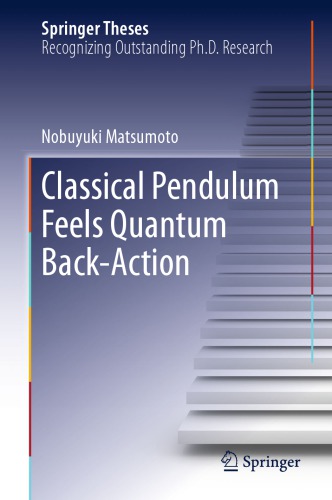

Most ebook files are in PDF format, so you can easily read them using various software such as Foxit Reader or directly on the Google Chrome browser.
Some ebook files are released by publishers in other formats such as .awz, .mobi, .epub, .fb2, etc. You may need to install specific software to read these formats on mobile/PC, such as Calibre.
Please read the tutorial at this link: https://ebookbell.com/faq
We offer FREE conversion to the popular formats you request; however, this may take some time. Therefore, right after payment, please email us, and we will try to provide the service as quickly as possible.
For some exceptional file formats or broken links (if any), please refrain from opening any disputes. Instead, email us first, and we will try to assist within a maximum of 6 hours.
EbookBell Team

4.3
98 reviewsIn this thesis, ultimate sensitive measurement for weak force imposed on a suspended mirror is performed with the help of a laser and an optical cavity for the development of gravitational-wave detectors. According to the Heisenberg uncertainty principle, such measurements are subject to a fundamental noise called quantum noise, which arises from the quantum nature of a probe (light) and a measured object (mirror). One of the sources of quantum noise is the quantum back-action, which arises from the vacuum fluctuation of the light. It sways the mirror via the momentum transferred to the mirror upon its reflection for the measurement. The author discusses a fundamental trade-off between sensitivity and stability in the macroscopic system, and suggests using a triangular cavity that can avoid this trade-off. The development of an optical triangular cavity is described and its characterization of the optomechanical effect in the triangular cavity is demonstrated. As a result, for the first time in the world the quantum back-action imposed on the 5-mg suspended mirror is significantly evaluated. This work contributes to overcoming the standard quantum limit in the future.